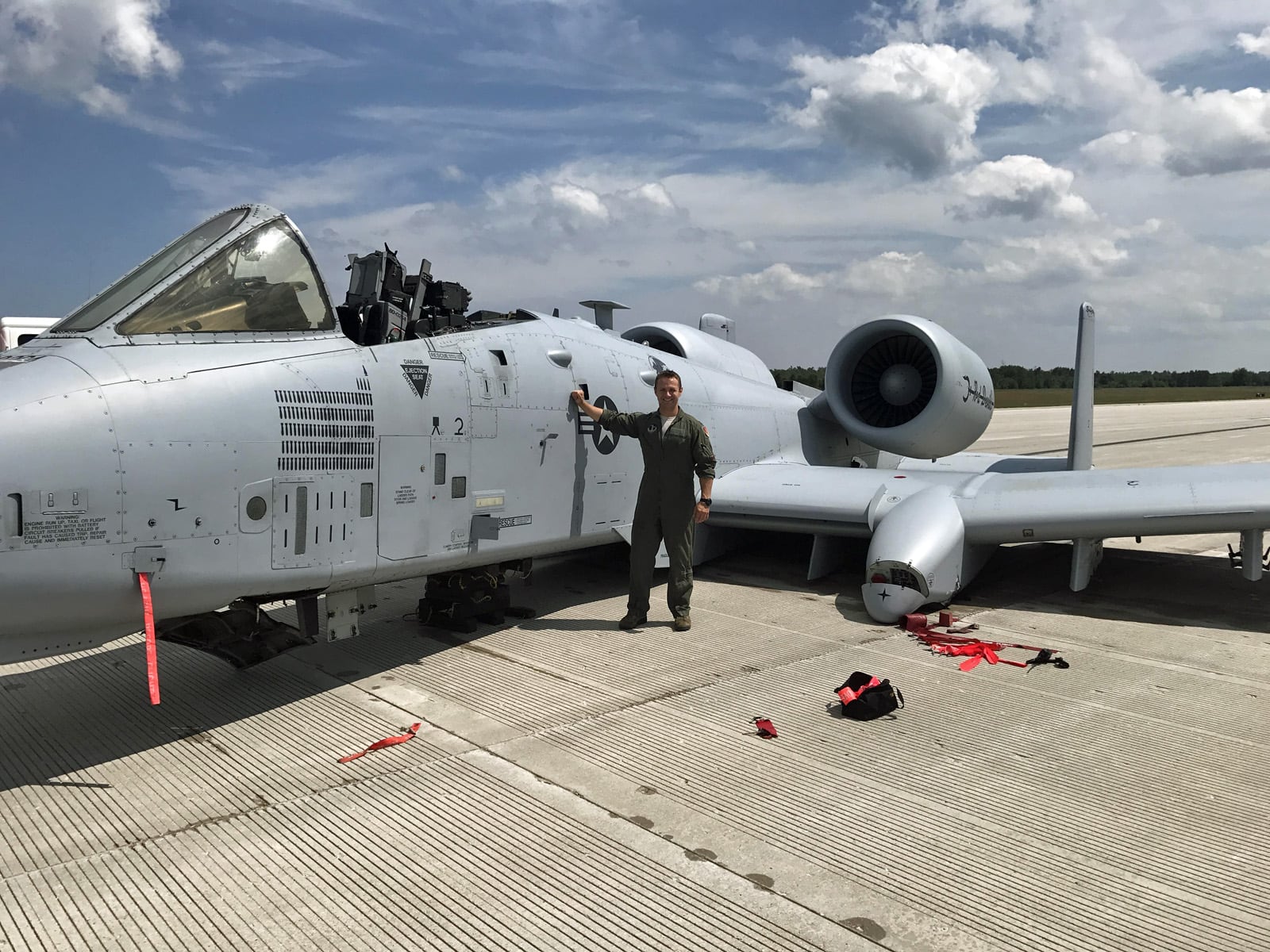One of the most impressive and daring emergency belly-landings in recent memory has earned an A-10 Warthog pilot the Distinguished Flying Cross.
Maj. Brett DeVries, of the Michigan Air National Guard’s 107th Fighter Squadron, received the DFC on Nov. 6 for “extraordinary flight achievement” for successfully landing his A-10 Thunderbolt II without a canopy or functioning landing gear on July 20, 2017, at the Alpena Combat Readiness Training Center.
Air Force Sec. Barbara Barrett presented the medal to DeVries at Selfridge Air National Guard Base in Michigan, the Air Force said in a Thursday release.
“The Distinguished Flying Cross is America’s oldest military achievement decoration,” Barrett said in the ceremony. “Awarded for heroism or extraordinary achievement that is ‘entirely distinctive, involving operations that are not routine,’ today, Maj. DeVries, you will join the ranks of some other American heroes.”
That harrowing emergency took place when DeVries, his wingman Maj. Shannon Vickers, and two other A-10s were training over Michigan’s Grayling Air Gunnery Range, according to an August 2017 Air Force release. DeVries, who was a captain at the time, was in the middle of his second strafing run about 150 feet off the ground when his 30 mm gun misfired.
At the same time, the Warthog’s entire canopy blew off. DeVries was struck with 325-knot winds, which slammed into his chest, caught his helmet and slammed his head back against the seat.
“It was like someone sucker punched me,” DeVries said in 2017. “I was just dazed for a moment.”

DeVries struggled to control the aircraft and get to a higher altitude. He lowered the seat as far as it would go to try to get some protection from the wind that was buffeting his head around and get a grasp on the situation.
DeVries needed help, fast. His wingman Vickers didn’t see his canopy blow off, but he did see a “donut of gas” from the gun envelope the plane. When Vickers saw DeVries start to rapidly climb, he realized something was wrong and flew over to assess the damage from beneath.
RELATED

It became clear the situation was even worse than DeVries knew: The blown canopy had damaged the bottom of the plane as well.
DeVries couldn’t even open up his emergency checklist because he was afraid its paper would get blown away and perhaps sucked into an engine.
Vickers and DeVries began to fly back to the base and brainstormed what his options were. DeVries had no idea if the misfiring gun had also damaged his ejection seat, and if it would still work if he tried to bail out.
DeVries tried to lower the landing gear while Vickers watched, but the wingman warned him the nose wheel was hung up due to the damage caused by the gun and it could not lower completely.
DeVries had no choice but to try to land the plane on its belly without landing gear or a canopy. DeVries and Vickers talked through the various ways the highly risky landing could unfold on their way back to base, while also consulting with A-10 maintainers patched in on speakerphones.
DeVries approached the runway shallow and slow, with Vickers guiding him in, and landed in the center 25 minutes after his gun misfired. DeVries was able to safely exit the plane on his own after it skidded in on its belly, and even posed for a photograph next to it afterward.
The entire 127th Wing at Selfridge was standing behind DeVries that day, Wing Commander Brig. Gen. Rolf Mammen said at the ceremony.
“Maj. DeVries truly put service before self and demonstrated a level of airmanship to which we should all aspire,” Mammen said. “As a commander, I cannot tell you how proud I am of Maj. DeVries and our entire 127th Wing.”
Stephen Losey is the air warfare reporter for Defense News. He previously covered leadership and personnel issues at Air Force Times, and the Pentagon, special operations and air warfare at Military.com. He has traveled to the Middle East to cover U.S. Air Force operations.





